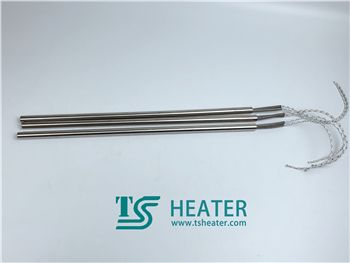
Oct 14 2022

Oct 14 2022

Oct 14 2022

Oct 01 2022
Cartridge heaters are widely used in all walks of life because the size can be flexibly customized according to the mold hole, easy installation, and high thermal efficiency. Cartridge heaters can be installed in stainless steel molds, iron molds, aluminum molds, and copper molds, like cutting knives, sealing machines, hemming machines, pressing equipment, etc.
However, many users find that the ink cartridge heater is sometimes particularly easy to break during use, and needs to be replaced frequently. They are curious to know why the cartridge heater is so easy to break. What about the long life of the cartridge heater?
We want to solve the problem that the ink cartridge heater is easy to break. The design of the ink cartridge heater should start from the following aspects:
(1) Design aspects
If we want to heat a mold, we need to open as many holes as possible, so that the heating temperature of the mold can be uniform.
After determining the diameter and length of the opening of the mold, the diameter and length of the cartridge heater can be determined. The voltage and power of the cartridge heater can be determined by knowing the diameter and length of the tube combined with the working temperature of the mold.
When the mold is at a working temperature of 100 degrees, the surface load of the cartridge heater is 1W/cm2.
When the working temperature of the mold is 200 degrees, the surface load of the cartridge heater is 2W/cm2.
When the mold is at a working temperature of 300 degrees, the surface load of the cartridge heater is 3W/cm2.
When the working temperature of the mold is 400 degrees, the surface load of the cartridge heater is 4W/cm2.
If the mold wants a higher working temperature, you can also use the imitation imported process to make the cartridge heater, up to 20W/cm2.
In this way, the surface load of the cartridge heater is designed to roughly estimate the temperature difference between the surface temperature of the heating tube and the mold.
(2), the material aspect
When the working temperature of the mold is 100 degrees, the surface of the cartridge heater is about 250-300 degrees. At this time, stainless steel 304 material with a temperature resistance of about 300-400 degrees should be used.
When the working temperature of the mold is 200 degrees, the surface of the cartridge heater is about 350-400 degrees. At this time, stainless steel 304 material with a temperature resistance of about 300-400 degrees should be used.
When the working temperature of the mold is 300 degrees, the surface of the cartridge heater is about 450-500 degrees. At this time, stainless steel 321 material with a temperature resistance of about 500 degrees should be used.
When the working temperature of the mold is 400 degrees, the surface of the cartridge heater is about 550-600 degrees. At this time, stainless steel 310S material with a temperature resistance of about 700 degrees should be used.
If you want the mold to work at a higher temperature, you need to choose imported Ingle material 840/800 with a temperature resistance of 700-800 degrees.
Some users who have higher requirements for the use of ink cartridge heaters and longer service life will also choose TSHEATER's ink cartridge heaters, because the ink cartridge heaters produced by TSHEATER are of relatively high quality in the industry, with high power, long service life, and good reputation. factor. Users whose normal working temperature exceeds 300 degrees will choose TSHEATER's cartridge heater.
(3), installation method
The installation method of the cartridge heater is very important, we have to install it according to the following 5 requirements:
1. The gap between the small hole of the mold and the tube surface of the cartridge heater should not exceed 0.05mm. If the gap is too large, the heat conduction of the cartridge heater will be affected.
2. When the cartridge heater is installed, the mold hole should be cleaned to avoid the residue left by carbon deposition after the heating of the previous heating tube. This residue can affect cartridge heater installation and thermal conductivity.
3. When the cartridge heater is installed, the heating area cannot leak out of the mold, because the part that leaks out of the mold is exposed to the air, and the heat conduction is relatively slow. When the heat transfer is not timely, the surface temperature of the cartridge heater is too high, and the mold cartridge heater will be burned out.
When installing the ink cartridge heater, it should not go too deep into the hole, so that the seal and wire of the ink cartridge heater may be burned out due to excessive temperature.
4. To fix the cartridge heater firmly, you can use the prefabricated screw holes to stand up the heating tube, and the latter adds a fixed stopper to fix the electric heating tube, so as to keep the cartridge heater from shaking, so as to avoid the adverse consequences mentioned in the previous article.
5. The cartridge heater should be used in a ventilated environment as much as possible, which is conducive to the rapid conduction of the temperature on the surface of the tube.
(4), temperature control
Cartridge heaters work with thermostats because the thermostat tells you the temperature.
The above content is our company's answer to the design, material selection, use conditions, installation, and other related questions of the cartridge heater. If you want the cartridge heater to have a long life, please choose according to the rules, this is the best answer.